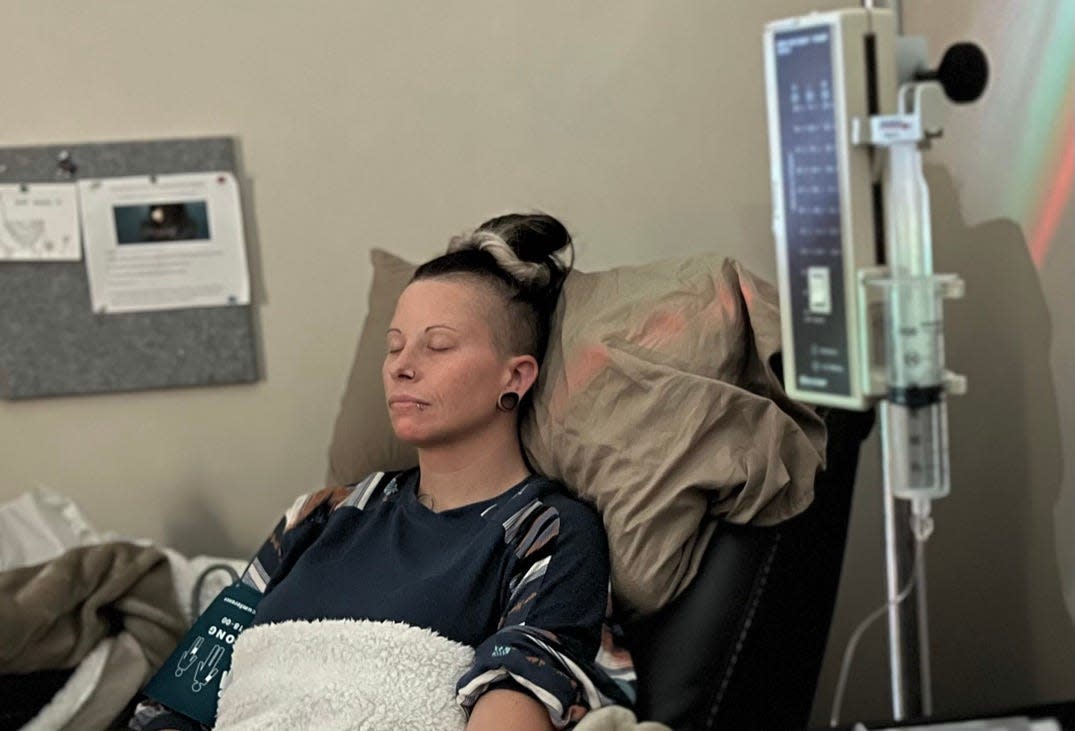What is ketamine? Here's how it works.

To understand what ketamine is and how it works, we have to understand some things about the brain – one of the world's most complicated and beautiful systems. Let’s boil synaptic connections down to a simple analogy: traffic lights.
Some signals say “go” and other signals say “stop.” Normally, communication is smooth sailing. But under duress, like severe physical or emotional pain, the brain may get too many “go” signals. This is where ketamine comes into play.
We spoke with experts to help guide us through what ketamine is and how it works.
What is ketamine?
Among our brain’s communication signals are neurotransmitters. One of these neurotransmitters is called glutamate. Glutamate helps neurons fire a “go” signal. But glutamate can’t work without unlocking what is known as the NDMA receptor. Think of this as the mechanism that turns the traffic light from red to green. This process is vital for learning and memory and for being conscious and aware.
However, there are some situations when you don’t want to be aware – like if you are in severe pain from an injury or if you are undergoing an operation. In these situations, it’s like all of the lights are green – you would just get signal after signal that you are hurt and you are in pain.
This is where ketamine comes in. It binds to the NDMA receptors and is essentially a “stop” signal. It starts to interfere with the connection between your brain and your body.
Ketamine is known as a dissociative anesthetic or dissociative hallucinogen. The effects are dose-dependent, but it generally leads to a “disconnected” feeling from you, your person – and your body. Symptoms range from unconsciousness, (like when used in general anesthesia) to an “out of body” experience or hallucinations.
What is ketamine therapy?
Glutamate plays a role in awareness and it also plays a role in regulating mood. Most of us have likely had moments of overwhelming, racing thoughts. In severe depression and anxiety, there is often a cycle of ruminating negative thoughts. Ketamine therapy, a combination of ketamine and cognitive behavioral therapy, aims to break this cycle.
Dr. Shannon Eaton, a neuroscientist and Assistant Teaching Professor of Psychology at Arizona State University explains how it works, “In the treatment of major depression disorder, ketamine can “stop” some of that faulty thinking, that rumination effect – the cycle of like, ‘Everything bad is happening. Only bad things happen.’ Ketamine can come in and silence that because it's that 'stop' signal saying, ‘Don't send that signal anymore. Stop thinking.' ”
Ketamine has recently received attention because of the role it played in Matthew Perry’s death. Perry was using ketamine under the care of a physician for the treatment of depression, although the levels of ketamine in his system at the time of his death weren’t related to his last infusion. When taken properly, ketamine can be a safe and effective treatment for depression, although the nasal spray, Spravato, is the only medication approved by the FDA. It’s an exciting development in the field of psychiatry because it often works right away, unlike other antidepressants which may take months to work.
What you should know: What are ketamine infusion clinics where Matthew Perry sought help?
Is ketamine legal?
Ketamine is a legal medication that’s used for many medical purposes. Dr. Ryan Marino, a Medical Toxicologist, Emergency Medicine Physician, and Associate Professor at Case Western Reserve School of Medicine in Cleveland, Ohio, explains that ketamine is considered a general anesthetic, but can be used for many different medical purposes. “Ketamine was primarily developed for anesthesia for surgical procedures, and it is still used for that indication today. It is also used as a general sedative – so for people who are on ventilators or if they have some other kind of critical illness and need continuous medication for comfort and sedation.”
He adds that it’s also used in the emergency department for some minor procedures like reducing fractures and dislocations.
Does ketamine require supervision?
Ketamine is also used recreationally, and without a prescription from a medical provider, it’s not legal. There are serious risks associated with taking ketamine without supervision.
Ketamine is a powerful tool in a medical professional's belt for the treatment of pain and requires physician-level expertise to be used safely. A doctor can weigh the risk factors that may make ketamine use unsafe such as a heart or psychiatric condition. In any setting, ketamine use requires supervision in case of an emergency.
Is ketamine an opioid? No – and how it works may surprise you.
This article originally appeared on USA TODAY: What is ketamine? How the drug involved in Matthew Perry death works

